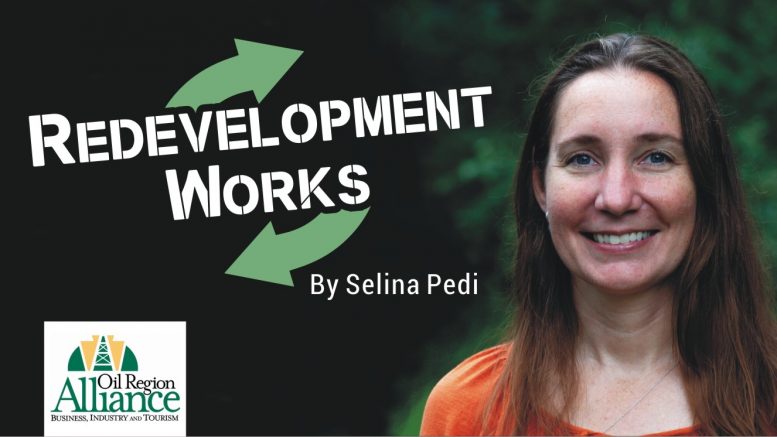
Beef cattle graze in an apple orchard silvopasture system on a farm in Poland. (European Agroforestry Federation, 2020)
Given the importance of agriculture to our state’s economy, it’s no surprise that a fair bit of agricultural activity is included in redevelopment planning, especially in rural northwestern PA. We’ve talked a fair bit in the past about opportunities with solar farming and hemp farming, and today I’d like to add another layer to the agro-economy mix: agroforestry.
For anyone not familiar with the term, the USDA defines agroforestry as “the intentional integration of trees and shrubs into crop and animal farming systems to create environmental, economic, and social benefits.” It’s certainly not anything new; humans have been utilizing agroforestry since we first started fiddling with agriculture at all. Up until the early 20th century, it was completely normal to mix and mingle and diversify farm outputs as much as possible. Technological advancements over the last 150 years, however, changed the face of agriculture. With larger and larger equipment, and larger and larger farms, the more labor-intensive practices of diversification were often replaced with now easy-to-manage monocultures. As we’ve since learned, though, those large-scale operations were far from beneficial to the land, and best practices now incorporate old, traditional methods with technology to nurture and protect the land while maintaining yields and the nutritional value of our foods.
And so, we have modern agroforestry, which utilizes all the slick tech it can to optimize species selection, placement, and maintenance while relying on the age-old benefits of intensive diversification. In fact, the USDA requires an operation to be Intentional, Intensive, Integrated, and Interactive to be considered actual agroforestry. The one type of agroforestry most of us would recognize would be windbreaks or hedgerows. Think of a quaint old-world farm, with stone paddock walls overgrown with flowering vines, protecting the roots of neighboring shrubs and trees, and you have the essence of agroforestry.
The “forestry” part of agroforestry, of course, requires trees to be part of the equation, though they can be integrated into the overall farming system in many different ways. Some of the most common are alley cropping, when field crops are planted between rows of trees; silvopasture, when livestock are intentionally run under mature fodder and/or shade trees; and forest farming, when understory crops (such as many herbs, shade-loving flowers, or coffee plants) are grown under a forest canopy. Many farms are beginning to incorporate several agroforestry practices into their operations, which helps to reduce reliance on chemical inputs, improves the health of groundwater, soil, crops, and livestock, and diversifies income streams, providing more resilient business practices.
We are currently looking at ways to incorporate agroforestry into our solar farming projects. A recently published paper from Italy has highlighted some exciting possibilities for ways to supercharge the bioremediation of brownfields and maximize the long-term potential of our project sites. A test farm near the AC Valley will soon begin running trials to see what layouts and planting mixes are most effective in our environment, and those lessons will be applied to project sites over the next several years. As always, please feel free to reach out with any questions, or to share your own experiences with agroforestry or agrovoltaics, or both!
Selina Pedi is the Oil Region Alliance redevelopment manager. She can be reached by email at spedi@oilregion.org.








































